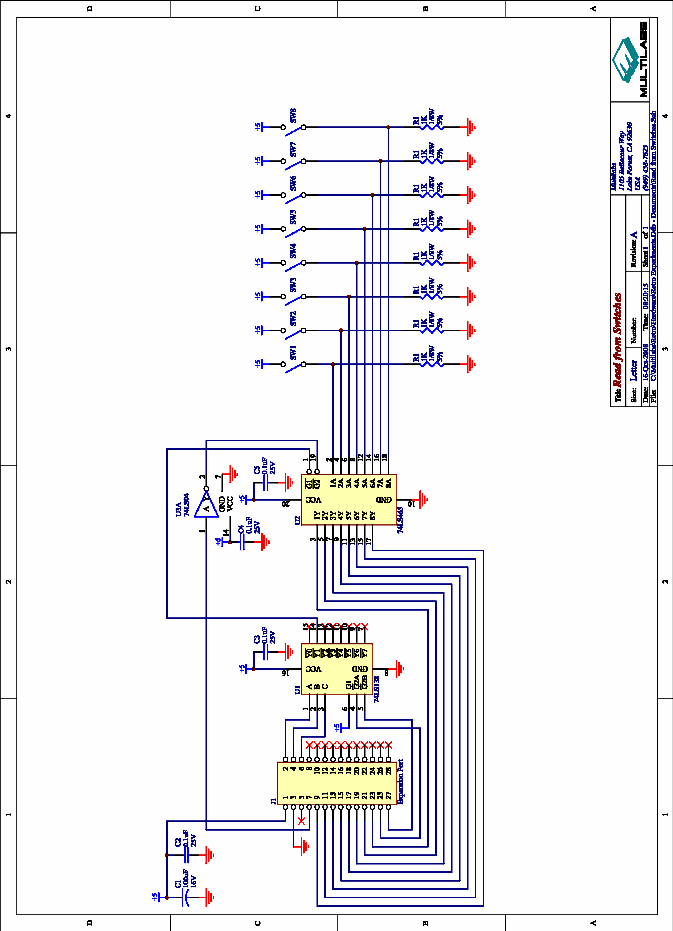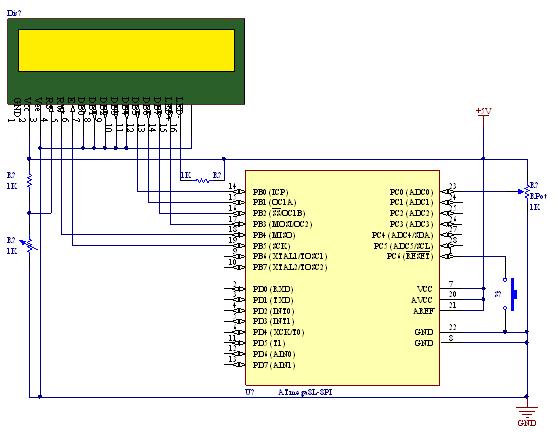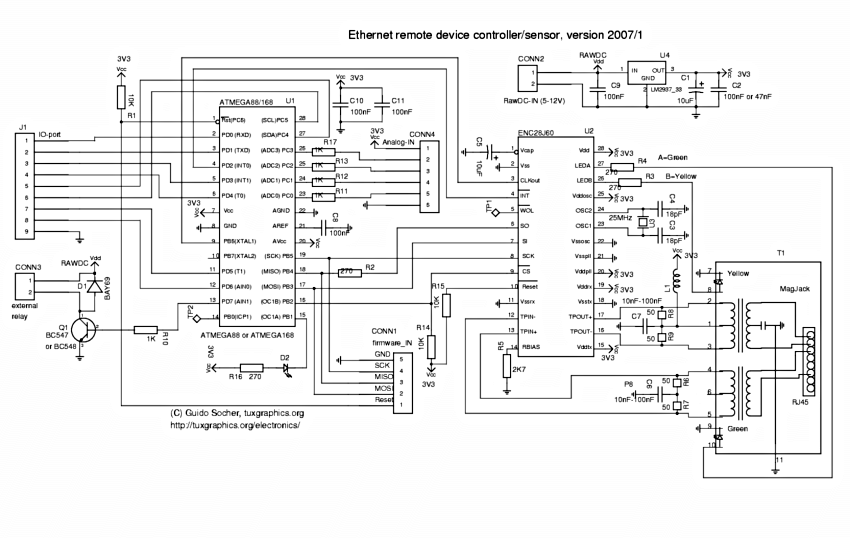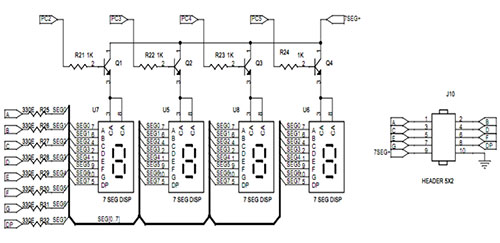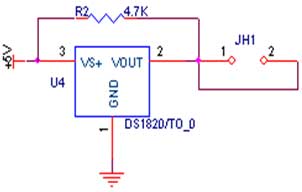
Beginners Guide AVR Programming
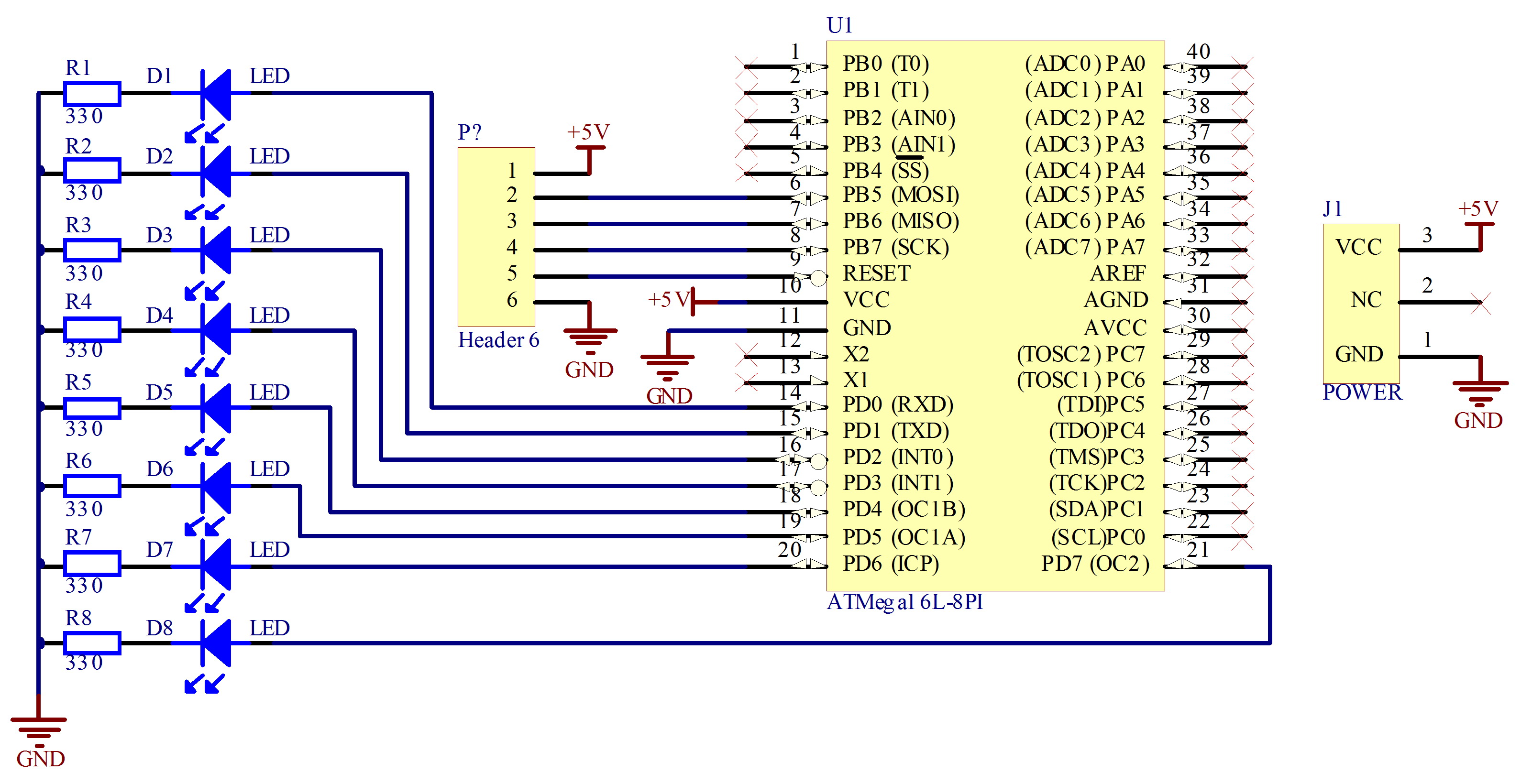
The project involves assembling a circuit that can be completed in 30 minutes. The required parts include: 1 circuit board, 1 Atmel AVR Atmega16 microcontroller, and 8 resistors with a value of 330 ohms each.
The schematic for this project outlines a basic microcontroller circuit utilizing the Atmel AVR Atmega16, which serves as the central processing unit. The circuit board will act as the foundation for mounting the components and establishing electrical connections.
The Atmega16 microcontroller is an 8-bit device featuring 16 kilobytes of programmable flash memory, 1 kilobyte of SRAM, and 512 bytes of EEPROM. It operates at a maximum clock frequency of 16 MHz and provides a range of I/O pins for interfacing with other components.
The eight 330-ohm resistors are typically used for current limiting in various parts of the circuit, such as LED indicators or pull-up/pull-down configurations for input pins. Each resistor should be connected in series with the components that require current regulation to prevent damage due to excessive current flow.
To assemble the circuit, the following steps are recommended:
1. Begin by securing the circuit board to a stable work surface.
2. Insert the Atmega16 microcontroller into the designated position on the board, ensuring that the orientation aligns with the pin configuration specified in the datasheet.
3. Place the 330-ohm resistors in their respective locations on the board, adhering to the schematic layout to maintain proper connectivity.
4. Utilize a soldering iron to connect the components to the circuit board, ensuring that each joint is solid and free of shorts.
5. After soldering, verify the connections against the schematic to confirm correct placement and orientation of all components.
Once the assembly is complete, programming the Atmega16 with the desired firmware can be accomplished using an appropriate programmer. This allows the microcontroller to execute specified tasks, enabling the circuit to function as intended. Proper testing and troubleshooting should follow to ensure that all components operate correctly within the circuit.You will get this done in 30 min. Step 1: Parts 1. 1 X any type of circuit board 2. 1 X Atmel AVR Atmega16 microcontroller 3. 8 X 330 ohms Resistors 4. 🔗 External reference
The schematic for this project outlines a basic microcontroller circuit utilizing the Atmel AVR Atmega16, which serves as the central processing unit. The circuit board will act as the foundation for mounting the components and establishing electrical connections.
The Atmega16 microcontroller is an 8-bit device featuring 16 kilobytes of programmable flash memory, 1 kilobyte of SRAM, and 512 bytes of EEPROM. It operates at a maximum clock frequency of 16 MHz and provides a range of I/O pins for interfacing with other components.
The eight 330-ohm resistors are typically used for current limiting in various parts of the circuit, such as LED indicators or pull-up/pull-down configurations for input pins. Each resistor should be connected in series with the components that require current regulation to prevent damage due to excessive current flow.
To assemble the circuit, the following steps are recommended:
1. Begin by securing the circuit board to a stable work surface.
2. Insert the Atmega16 microcontroller into the designated position on the board, ensuring that the orientation aligns with the pin configuration specified in the datasheet.
3. Place the 330-ohm resistors in their respective locations on the board, adhering to the schematic layout to maintain proper connectivity.
4. Utilize a soldering iron to connect the components to the circuit board, ensuring that each joint is solid and free of shorts.
5. After soldering, verify the connections against the schematic to confirm correct placement and orientation of all components.
Once the assembly is complete, programming the Atmega16 with the desired firmware can be accomplished using an appropriate programmer. This allows the microcontroller to execute specified tasks, enabling the circuit to function as intended. Proper testing and troubleshooting should follow to ensure that all components operate correctly within the circuit.You will get this done in 30 min. Step 1: Parts 1. 1 X any type of circuit board 2. 1 X Atmel AVR Atmega16 microcontroller 3. 8 X 330 ohms Resistors 4. 🔗 External reference
